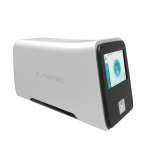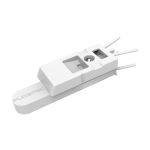Evaluation and improvement of a miniature mass spectrometry system for quantitative harm reduction drug checking
The increasing variability of the illicit drug market has imposed serious health risks for people who use drugs (PWUD), particularly due to the increasing co-occurrence of opioids and etizolam (or other benzodiazepines) in some jurisdictions. A miniature mass spectrometer (MS) equipped with paper capillary spray ionization was evaluated for its ability to quantify fentanyl, fluorofentanyl, carfentanil, and etizolam in illicit drug samples. Prior to testing actual drug samples, inter- and intra-day reproducibility, calibration linearity, and analytical sensitivity were assessed. The development of a continuous spray solvent delivery system improved MS/MS quantitation by prolonging ionization stability. A simple, rapid and quantitative tandem mass spectrometry method was developed and employed for the analysis of real-world illicit drug samples provided by PWUD at a harm reduction site in Victoria, British Columbia, Canada. Limits of detection ranged from 0.001 to 0.24% w/w of illicit analyte in the original solid drug samples. Target analytes were detected and quantified via the miniature MS system for samples where conventional on-site drug checking technologies were not always effective. These promising results demonstrate the potential role for miniature mass spectrometer systems for on-site drug checking services that can be both sensitive to trace, toxic levels as well as adaptable/selective for new drug threats as they appear in the illicit drug supply.
This work demonstrates the use of a miniature paper capillary spray ionization tandem mass spectrometer (PCSI-MS/MS) to quantify fentanyl, fluorofentanyl, carfentanil, and etizolam in illicit drug samples. A continuous spray solvent delivery system was developed and used with PCSI to prolong ionization stability, allowing the effective use of interlaced MS/MS scan sequences for direct quantitation. The system was evaluated for inter- and intra-day reproducibility, calibration linearity, and analytical sensitivity. Limits of detection (in MeOH) ranged from 0.001 to 0.24% w/w of illicit drug in the original solid drug samples. Target analytes were detected and quantified via PCSI-MS/MS for samples where conventional on-site drug checking technologies were not always effective.
International Journal of Mass Spectrometry 484 (2023) 116976,
DOI: 10.1016/j.ijms.2022.116976



